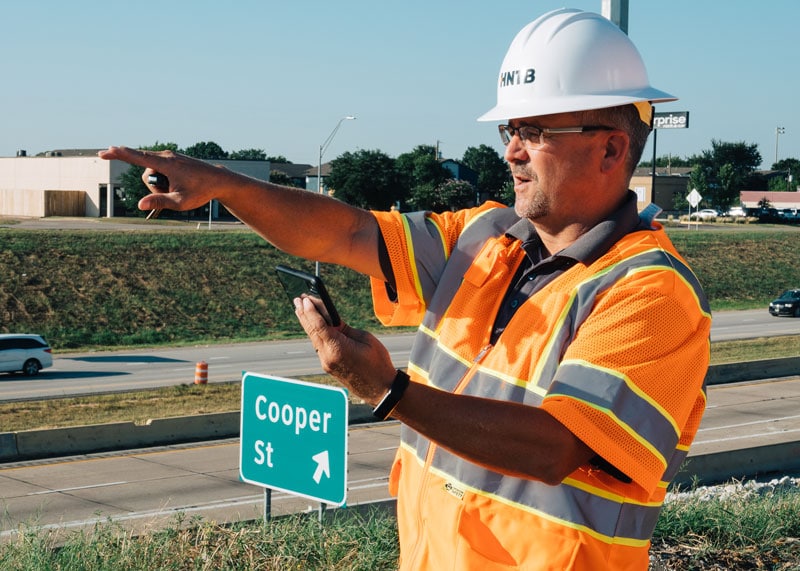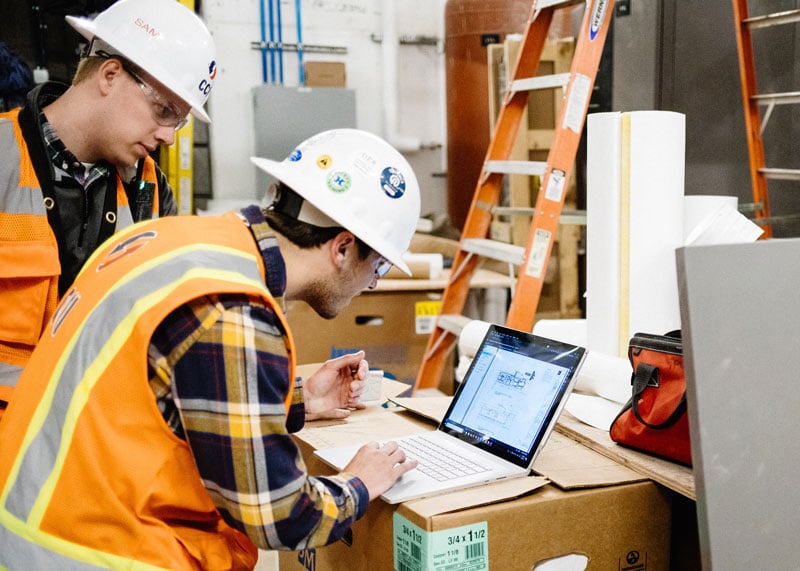Technology adoption within construction has taken the industry into unchartered territory. With a myriad of digital tools now available, many firms are fighting tooth and nail to see who can be the most innovative and who can better their bottom line because of it. The flipside to that coin is that many firms are also struggling with having too big of a tech stack, licensing issues—or just adopting technology in a vacuum, which only mitigates symptoms of inefficiencies rather than addressing the root causes or issues. Often, the end users are the ones who suffer most when dealing with ill-advised tech adoption, especially those in the field.
Raken director of product management, Stan Singh, a former project engineer for Turner and Kitchell can see the pain points from both a field and administrative perspective. “One of the challenges that comes up in the field primarily is they’re not the decision-maker in selecting that technology or the tool,” he says. What companies like Bluebeam and Raken are trying to do he says is say, “Hey, that doesn’t work anymore. Especially in this climate where labor shortage is a real thing.” Bluebeam VP of Strategy and Partnerships Todd Wynne agrees with putting the field first for evaluating the value of construction technology implementation. “Despite all the advancements, only a select few are actually getting to benefit from that value,” asserts Wynne. “Meanwhile, most of those who are actually putting the work in place are not getting to experience the value. And the crazy part is, this is where the rest of the world measures our productivity—at the worker level. Isn’t this where our focus and investment should be? Shouldn’t we be doing everything we can to make sure that the worker with the wrench in hand has everything they need to do their job effectively?”

Decision-making
What’s good for the bottom line can no longer be at the expense of end-user adoption. Drawing parallels with the recent Wall Street Journal article regarding the Business Roundtable’s recent change to their ideal that “corporate decision-making should revolve around what is best for shareholders”: That sentiment needs to be echoed by the construction industry when it comes to the introduction and adoption of technologies, according to Singh. “Managing a job is hard enough,” says the former field engineer. “Leveraging a tool that doesn’t help you manage that job effectively is not worthwhile. We’ve seen this shift happen, where now the focus is on the user first. Whatever’s good for that user is going to be good for the project, and if it’s good for the project, it’s going to be good for the company and the bottom line.”
‘Superintendents, foreman, and field engineers, they probably amount close to 50%-60% of that population of companies. For them to be essentially strangled with tools that don’t meet their needs and are not personalized to their workflows, it’s challenging.’
Stan Singh, Raken Director of Product Management
Getting technology buy-in from the field means allowing the field to properly be involved in the process of acquiring technology. That may seem pretty self-explanatory, but there is still a process to executing that properly, according to Singh. “One of the steps that you can do to make sure that you have participation from your end users and selecting technology—not just the field but also the people in the office. They get burdened with archaic tools as well, so it’s important to go through a 10-step process in the technology presentation and kind of work through that process to really shift the focus to that ‘user-project-company level’ in lieu of ‘company-project-user-level.’”
Ten steps to field empowerment
1. Identify – What issue are you looking to solve?
2. Establish scoring criteria – What equals success for this tool or technology?
3. Research – Dive into the available technologies and tools to try demonstrations.
4. Gain participation – Establish a pilot program with end users to get feedback.
5. Reevaluate – Do you need to adjust your criteria? Is this what you need?
6. Make a selection – Choose a tool or technology based on alignment between needs and feedback
7. Adoption– Allow key users or projects to adopt the tool first to help evangelize the tech.
8. Roll out – Increase users across the business or enterprise in a sustainable manner.
9. Standardization – Create a workflow or way of working based on the technology across the company
10. Reevaluate – Always keep an ear to the field and an eye on the latest technology for continuous improvement
Factors to consider
Cost is the key consideration when most firms evaluate tech, but the overall value proposition should be more of a priority. That can account for other factors needed for success, specifically for field-based users. “You have usability, mobility, logistics,” says Singh. “You may have instances where you may not have good signal, so having offline capability is an important thing. All these type variables are equally weighted and then scored upon so that you can get a product that is cost effective but also solves the problem and helps the end user.”
Understanding the end-user environment is critical for field technology success. Equally as important is understanding their workflows. “If you talk to any superintendent they’ll always say, ‘Hey, we’ve got to use the right tool for the right job.’ Personalizing the technology to the end user becomes extremely important. A lot of the tools out there are catering to the idea of, ‘Hey, let’s improve the information exchange from the office to the field and not so much from the field to the office.’”

Everybody wins
“We need to make this job approachable and interesting and fun for people in the field,” concludes Singh. “By putting them first and allowing them to be a part of tech decisions, it’s just going to allow them to grow and have more interest and do their job better ─ which will actually help the business because you’ll get better data. Putting the field first is also going to help with that labor shortage as well,” according to Singh. “You’ve got this innovation loop happening where you’re focusing on the user, giving them that space and freedom so that they can then provide you value upstream, which then comes back full circle in terms of getting more people interested in design and construction. You give them that freedom, people are going to be happy, you’re going to win more jobs and they’re going to refer not only more jobs but they’re going to refer more people to come work for you, giving your firm an even bigger advantage towards that overall value proposition.”













